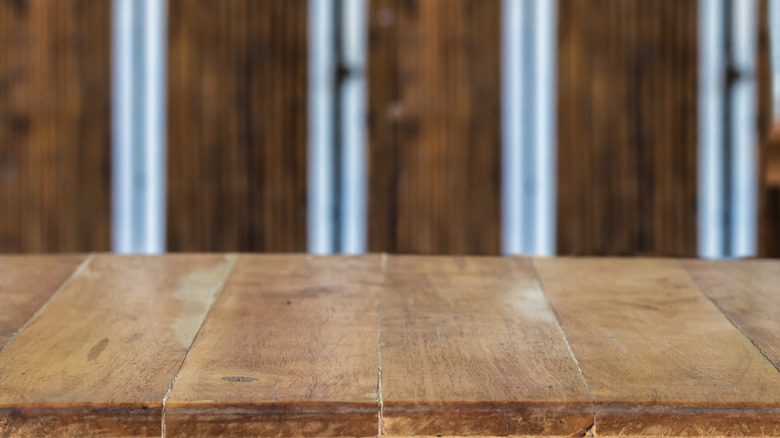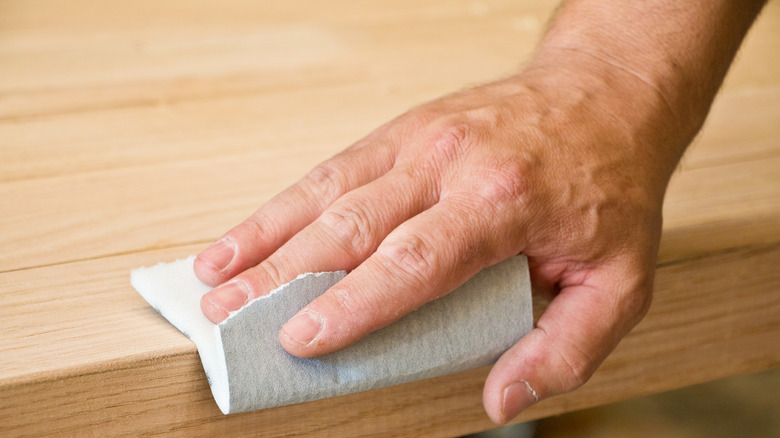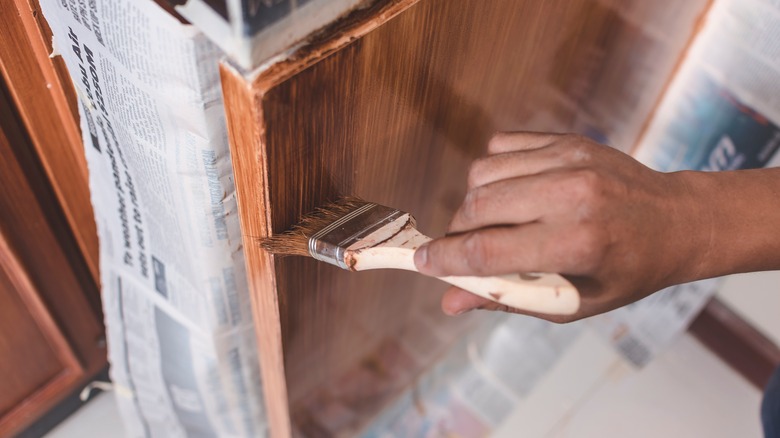Wipe Out Wood Furniture Stains With This Common Household Ingredient
If you have recently noticed a stain on your beautiful wooden coffee table or a mark on your wooden countertop, you're probably looking for a safe yet effective way to restore your furniture back to how it was. Wooden furniture is subject to damage like bleaching if the wrong materials are used to clean it, so it's important that you're using the right cleaning agents to leave your wooden furniture gleaming and stain-free. That's where hydrogen peroxide comes in.
Not just for disinfection purposes, nifty medicine cabinet staple hydrogen peroxide gets rid of myriad stubborn household stains. However, the process of removing marks from wood is a little more involved than you may think. This is because you might need to sand down the surface first. Aside from this, the only other item you need for this hack is hydrogen peroxide, making it a simple process. If you want to remove a stain and make your wooden furniture item look brand new, simply follow the below steps.
Banish stains on wood with hydrogen peroxide
Grab a clean cloth and cover it in 3% hydrogen peroxide. Firmly scrub the stain with the cloth and then leave the cloth over it for approximately 10 minutes. You might want to leave it on for closer to 15 minutes if the stain is particularly stubborn. If this doesn't make a difference, put the cloth back over the stain and let it sit for a longer period of time, preferably overnight if possible. Afterward, make sure you wipe the area that was treated with a clean cloth to get rid of any residue.
If this method doesn't work, you may have to sand down the wood before trying it (remember to always wear a mask when sanding). This will allow you to put the hydrogen peroxide on the core of the stain rather than the top layer. Carry out the above steps, leaving the cloth to do its job overnight. When the time is up, let the wood dry naturally and completely before sanding the spot once more.
Keep the following in mind before begininng
After sanding again, it may be beneficial to re-varnish the part of the wood you have worked on so that it isn't a different color from the rest of the piece. Additionally, you may need to repaint if the wooden item was painted over originally. Before going in with the hydrogen peroxide, do a small patch test. You don't want to end up stripping the pigment completely from the surface; you just want to remove the mark. This is particularly important if you're working on an expensive or irreplaceable wooden item.
The way this hack works is that hydrogen peroxide essentially removes the pigment from stains, making them invisible to the eye. Because of this, if you're working on a particularly stubborn stain, it might be best for you to try the sanding part of the method from the start. This will ensure you're removing the pigment from the stain's core. You can do this with sandpaper or a sander depending on what your DIY level is.


